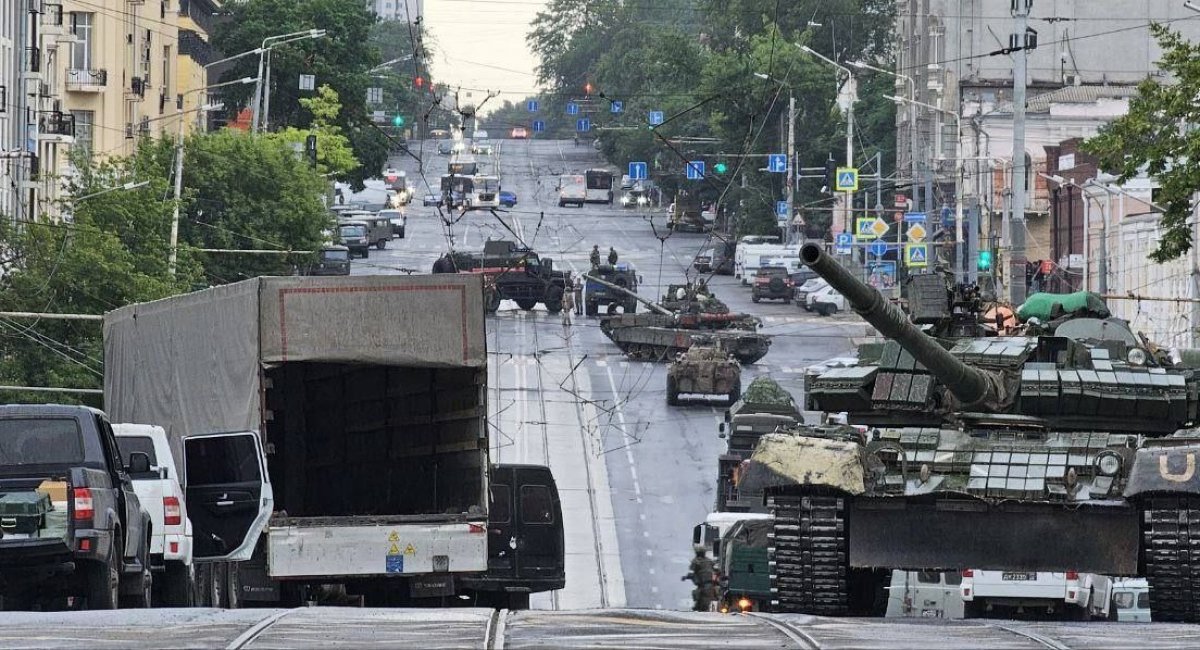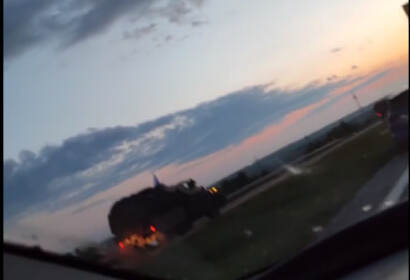
What kind of equipment did the Wagner PMC units use in Rostov, and is there a difference between the Russian army and the Ukrainian army (photo)
“Wagner’s units showed a rather interesting “zoo” of different models of equipment, which we will now analyze
As of June 24, 2023, it is known that Prigozhin’s Wagner PMC units have reached Rostov and at least surrounded the headquarters of the Southern Military District and other security forces in the city.
It is not yet known whether the Wagnerites have begun to block the work of their “colleagues” from the Russian army at the headquarters of the Southern Military District, and it is unclear what the future dynamics of the conflict may be. But there are already some interesting details against the background of all these events that can be analyzed: the samples of equipment with which the Wagnerites actually reached Rostov. Moreover, there are plenty of videos on this topic in our social media segment, so there is plenty to analyze.

To begin with, the footage showed a type of armored vehicle that is considered “branded” for the Wagner PMC – the Ural Chekan armored vehicle, aka Shchuka, which can be considered a “reincarnation” of the BTR-152, which was used by the Wagnerians during their operations in Africa and some battles against the Ukrainian Armed Forces in the summer of 2022. Defense Express has previously described the features of this armored vehicle in its material.
Or another interesting detail – on the trawl as part of the “Wagner” column, filmed probably while moving to Rostov, we can see a very interesting “shushpantser” – BMP-2, which, in addition to standard weapons, also received ZU-23-2. This is simply the first example of such a “shushpunter” based on BMP-2, which was spotted by the Russian occupiers in the war against Ukraine. Earlier, we knew about another “exotic” vehicle based on BMP-2, covered with Kontakt-1 blocks, like an “Iron Kaput”.

But if we continue to talk about real “exotic” things, for example, even unidentified “Wagner” MRAPs, the type of which and even the sample of the combat module on their roof cannot yet be identified. But, in any case, these were definitely not BMP-97s with Vystrel modules, which in some ways resemble the reincarnation of the Soviet BTR-40. They are visually similar to the Lens armored vehicles, but also have their own differences.
Moreover, there have been no reports that Wagner’s men used armored vehicles as weapons in battles against the Ukrainian Armed Forces, particularly in the Bakhmut sector, so perhaps such armored vehicles in the units of Putin’s chef appeared in the context of plans to create their own Wagnerian military police, deployed in a commandant’s regiment.

The tank component in the “Wagner” columns also looks diverse and interesting. If only because we can see T-90M Proryv on the trawl as part of the same Wagner PMC formation that was marching on Rostov, such tanks were used by Wagner as “improvised self-propelled artillery systems” during the battle for Bakhmut.
There is also a T-80BV, probably removed from conservation, painted with “zukovs” and covered with “Kontakt-1” blocks. And even something similar to a T-72B3 with a grill on the roof.



If we talk about the “lit” vehicles in the Wagnerian formations, on the one hand, we can see familiar models, such as the UAZ “loaf” or a truck as a platform for the S-60 anti-aircraft gun.
On the other hand, a vehicle of unknown purpose based on KAMAZ was also spotted, probably a repair and evacuation vehicle.



It seems that even though the Wagner PMC units tried to portray a semblance of a “regular army,” they deliberately built their fleet of equipment so “diverse” as to be distinctly different from the “regular” army of the Russian Federation.

